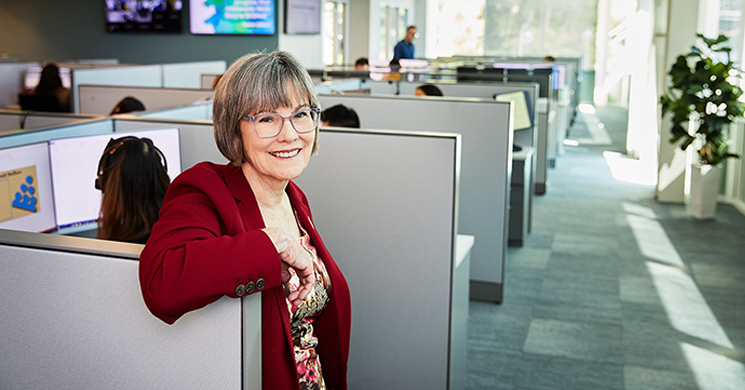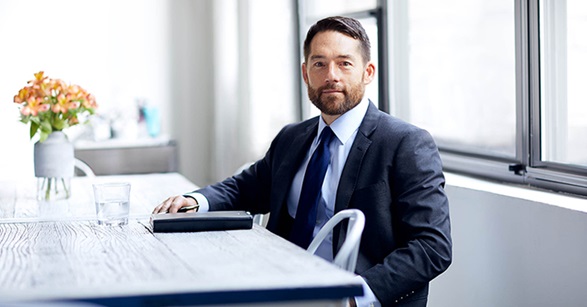Based in Los Angeles, Didi Hirsch Mental Health Services has transformed lives by providing mental health and substance-use and suicide prevention services for 75 years. It all began when a few philanthropic women funded psychiatric care for families devastated by the Great Depression. Ongoing need led them eventually to form the first freestanding, nonprofit mental health clinic of its kind in Los Angeles in 1942.
The organization’s history is full of firsts, including being the first suicide prevention center in the nation. A model for other organizations across the globe, it also was the first to offer suicide crisis line services 24 hours a day, seven days a week.
A licensed psychologist who began her work with troubled teenagers, Dr. Kita S. Curry joined the organization in 1994 and became President and CEO in 1999. Under her leadership, the organization has grown threefold.
We recently spoke with Dr. Curry about the center’s leadership in national suicide prevention initiatives and how the community can help.
It’s likely that everyone will be touched by suicide at some point in their life — because of a friend’s suffering or their own.
How has the Didi Hirsch organization grown and increased services during the past 75 years?
Dr. Curry: Originally known as LA Psychiatric Service, the organization began with a $5,000 budget and donated space. I wish the women who started the agency then could see how it has flourished. Today, we have a $50 million budget, 500 staff and 200 volunteers.
In the early years, Didi Hirsch served adults who lived in the Westside or mid-Wilshire area. Today, we see clients of all ages at 10 centers, including one in Orange County. We also provide services onsite at almost 100 schools and other community settings, including Skid Row. Although our Suicide Prevention Center helps both rich and poor, the other programs focus on those living at or just above the poverty level — 75% of whom represent minorities. Combined, our mental health, substance use and suicide prevention programs served over 127,000 clients last year.
How does Didi Hirsch help prevent suicide today?
Dr. Curry: Our Suicide Prevention Center offers a continuum of care that addresses the needs of individuals who are contemplating suicide, coping with the aftermath of a suicide attempt and/or grieving a suicide loss. Its services are organized around four programs: Crisis Services, Therapy & Support, Training and Education, and Research and Innovation.
Crisis Services: Last year our 24-hour Suicide Crisis Line answered more than 100,000 calls and chats from individuals who were contemplating suicide or worried about a friend or loved one.
Therapy and Support: The suicide loss support group, developed by the Suicide Prevention Center almost 40 years ago, has been a model for others around the world.
Training and Education: Last year, Didi Hirsch’s Suicide Prevention Center trained more than 10,000 youth and adults from all walks of life.
Research and Innovation: Didi Hirsch is dedicated to advancing the field of suicide prevention while easing the terrible psychological pain associated with suicide.
How is Didi Hirsch helping to shape the current face of suicide prevention services across the nation?
Dr. Curry: With the public’s increasing awareness of the rising suicide rate and the availability of nationwide resources like the National Suicide Prevention Lifeline, the demand for our services has increased dramatically. For example, calls to our Crisis Line quadrupled in the last decade.
As we began to run out of room in the shared building we’d been leasing for 10 years, the Board of Directors voted unanimously to launch a capital campaign for a permanent, standalone home for our Suicide Prevention Center. It needed to be large enough to allow us to expand and add new services today and into the future. And it needed to be accessible for our staff and volunteers.
With the recent grand opening of our new home for the Suicide Prevention Center, we are ready for another era of development. Our new initiatives will include:
- A Training Academy that will provide hands-on, in-depth coaching for practitioners seeking more advanced training than provided in graduate school.
- Individual, group and family therapy for those who need more extensive help than can be provided in eight-week support groups.
- Virtual coaching for therapists and co-facilitators who are about to run their first eight-week attempt survivors’ group. We will be able to walk them through unexpected challenges during meetings before and after each group session.
We are also pointedly removing the stigma of suicide by placing large monument signs on our building that say “Suicide Prevention Center.” We’ve all driven by signs for Cardiovascular Centers and Cancer Centers. It’s time suicide was literally front and center alongside other serious health issues. There is no other comprehensive, standalone Suicide Prevention Center like this in Los Angeles or California or, as far as we know, in the U.S.
Why is it so important to offer this type of suicide support to such a broad audience?
Dr. Curry: Suicide is a public health crisis in the U.S. In the last 20 years, suicide rates have risen over 30% among almost every age group, gender, ethnicity and financial status. In 2017, over 47,000 people died by suicide — more than in motor vehicle accidents or by homicide. It’s likely that everyone will be touched by suicide at some point in their life — because of a friend’s suffering or their own.
Forty percent of the individuals who die by suicide have made one or more previous attempts. This illustrates how important it is to intervene, especially among youth. According to national surveys, the suicide attempt rate is more than 10 times higher among high school students than adults 18 and older.
It’s also important to promote mental health care. Nine out of every 10 people who die by suicide have a mental illness, which often has gone untreated. We need to make sure that people who have survived a suicide attempt are linked to mental health care. Treatment could reduce the risk that they eventually will be among the 40% of suicide victims who die by suicide on their second, third or fourth attempt.
What can someone do to support a loved one who may be suicidal?
Dr. Curry: If you open the door to your heart, friends in pain may have the courage to open theirs to you. If you are concerned a loved one may be suicidal:
- Speak up when you are worried about changes in your loved one’s behavior. Let them know you’ve noticed and want to help. More serious warning signs include giving away possessions and talking about feeling hopeless, being a burden or wanting to die.
- Ask if they are thinking about hurting themselves or wish they could die. Even if they say no, make a point of reaching out more often. If they say yes, tell them you’re sorry they are in so much pain and want to help.
- Ask if they’ve thought about how and when they would do it, and whether they have the means. If they do, try to remove it.
- Ask if there are other people who could help — together with a spouse, parent, or friend, you can create a bigger safety net.
- Call your friend’s therapist with your friend, or call on your own. Therapists cannot confirm whether someone is a client, but they can listen. Sometimes it may be necessary to call 911.
Another option is to call the National Suicide Prevention Lifeline with your friend. A counselor can guide you through helpful steps to take, and another counselor can offer solace to your friend.
Don’t ever promise to keep your friend’s suicidal thoughts a secret. I’d rather have someone mad at me than have to go to his or her funeral.
If you or someone you know is thinking about suicide, please call the National Suicide Prevention Lifeline at (800) 273-8255. Didi Hirsch is a leading member of its network.




